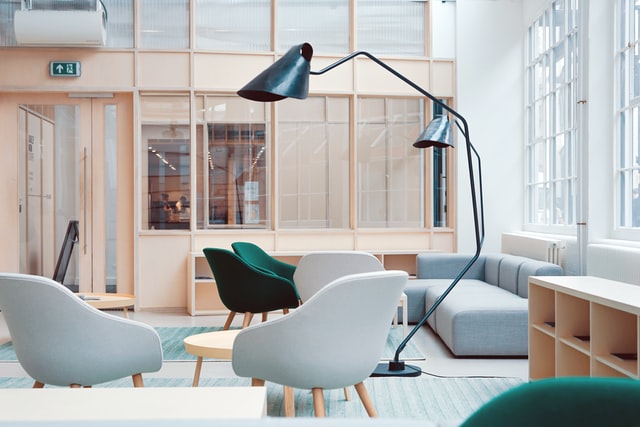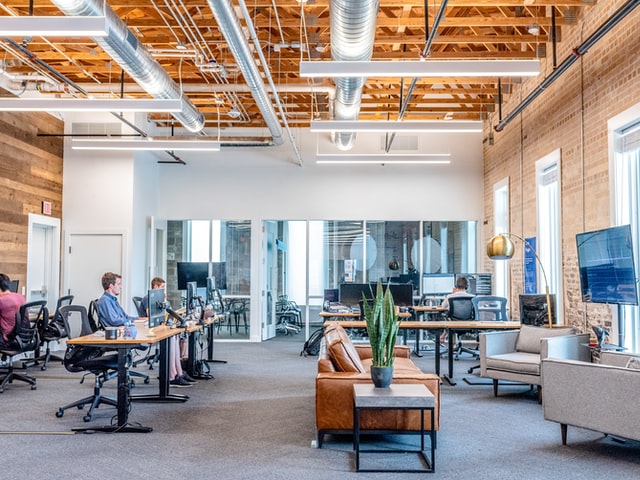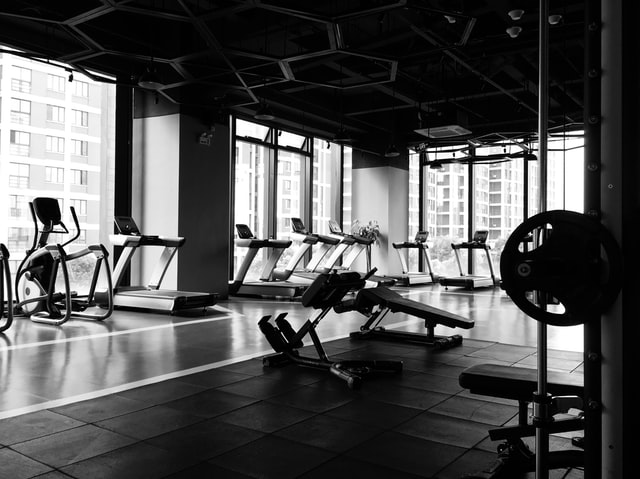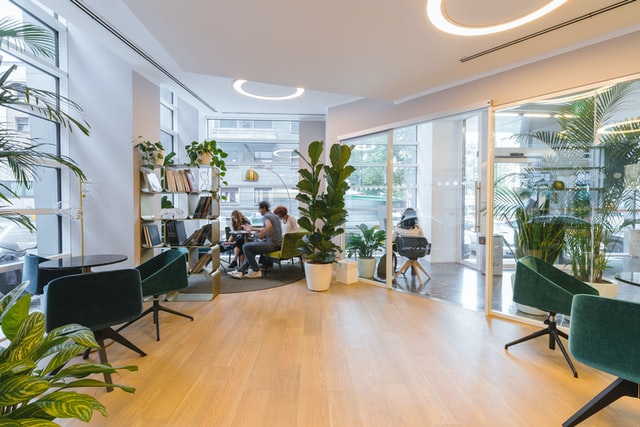
The needs and preferences of office workers have changed dramatically in recent years, causing much of the market to shift their offerings to create a positive work environment that stimulates employee engagement. These changes have largely been linked to increased demand for flexibility in the workplace, in addition to more humanistic office design elements and healthy working initiatives.
It’s well known that happy workers are more productive. An extensive study out of the University of Oxford even quantified this boost – with a finding that happy workers are 13% more productive. Employees are undoubtedly the most valuable asset for the vast majority of businesses, making a focus on improving mental health and building a positive working environment extremely vital.
But what exactly do employees want in an office environment? What types of things can employers provide to strike a healthy balance between productivity, positive reinforcement, hard work, and employee happiness? Below, we’ve collated five core things that employees can do to make employees feel happy at work, both inside and outside the office walls.

Flexible Work Environment
Flexibility doesn’t just mean flexible hours or hybrid office arrangements. In today’s landscape, flexibility involves rethinking how workspaces are planned.
Office workers are increasingly demanding flexible office layouts that don’t require them to be at their desk during the entire work day. The alternative is to set up activity-based working, which has already been a success in many parts of the world. These more communal layouts are flexible by nature, and can be configured to accommodate different activities like individual work, project work, brainstorming, learning, meetings, or quiet time.
Rather than letting the office layout set limits on what can be done and where, activity-based working instead puts the onus on tasks and needs to determine how offices should best be designed. Even outdoor areas like patios, rooftops and terraces are seeing use for work production, weather permitting, with a few additions, like power sockets, protection from the elements, and comfortable but hardy furniture.

Strong Focus on Health
After a stressful couple of years, and with uncertainty still looming in the horizon, employees expect workplaces to have a stronger focus on health. Apart from enhanced cleaning procedures and improved air quality, one of the trends already shaping employees’ expectations is restorative spaces and wellness practices.
The key is to consider how workspaces can support employees who are recovering from high stress levels and new health concerns. One way could be rethinking the incentives of employee reward programs. Restaurant and shop discounts may not be in high demand right now, but other perks like life coaching or training on how to manage stress certainly are.
In response to recent events, some employees now expect bolstered safety measures throughout the office in order to combat potential health scares. Touchless technology has experienced a boom, with many office workers now expecting it to be commonplace throughout their working environment. This type of tech can be applied to access control cards, door handles, or room booking systems, limiting the number of surfaces that workers touch and ultimately curbing the spread of potential viral outbreaks. Addressing these safety concerns in the workplace can be done in multiple ways. There are affordable alternatives already in the market, like infrared sensors, QR codes or automatic doors.
It’s also common for workplaces to now include wellness facilities, including gyms, saunas, and meditation rooms. These types of facilities have been introduced to promote a positive mindset amongst team members, with the ultimate goal of promoting a healthy work environment and higher job satisfaction.

Work-Life Balance
Although this concept certainly isn’t new, many UK office workers have experienced improved work-life balance after working remotely for many months. The time saved from not commuting alone has brought a big improvement in quality of life, so, understandably, many office workers expect to maintain this newly found balance moving forward.
Major companies have stated that offices with hundreds of staff may be a thing of the past, so this may be an opportunity for businesses to move or adapt their workspaces to lower their footprint, and general office-related overheads.
Downsizing and creating office spaces that promote a better work-life balance can be achieved by:
- Working with managers to refine their understanding of productivity, so that it’s not just defined by the number of hours spent at work.
- Creating quiet and comfortable break areas, which can be designed to more resemble homely spaces.
- Reviewing tasks and workload allocation systems.
- Adopting a “don’t take work home” policy, including no – or at least reduced – expectations for employees to answer work related communications outside their work hours.

Engaging Lighting & Decor
Having the correct office lighting and decor might not be the first thing that comes to mind when you think about the productivity and overall happiness of your employees, but you would be surprised at how large of a role these two factors play. Effective lighting can stimulate energy levels and mitigate headaches by reducing strain placed on eyes. Whilst artificial lighting is definitely superior to no lighting at all, having an office space filled with natural light is the ideal scenario. In fact, office spaces that have improved their natural lighting have even reported less absenteeism!
Engaging decor goes hand in hand with great lighting, as it works to stimulate productivity and inspire innovation. If employees work in a drab and cookie-cutter workplace, filled with grey cubicles and furniture pulled straight from the 1970s, then their mood will be sure to match. Instead, employees want to work in office spaces that are highly functional, comfortable, visually diverse, and generally indicative of the business that occupies them. Ergonomic furniture, colour schemes featuring warmer tones, plant-life, and comfy chairs are all things that can serve to improve productivity and inspire creativity. It’s also important for employees to feel like they’re working in an environment that they’re proud of, particularly for those who frequently interact with clients or other core stakeholders in the workplace.

Effective Communication
Simple and effective communication is another factor that’s core to any successful working environment. Establishing solid lines of communication will often work to mitigate mistakes, improve employee morale, increase productivity, stimulate innovation, and cultivate a healthy company culture.
Increasing demand for remote work schedules and hybrid working models seen in recent years has further reinforced the importance of communication across various major industries, particularly between in-person and remote employees. Countless businesses are investing time and effort into remote communications tools, training employees to maximise their utility to ensure that no messages are poorly communicated virtually. Additional investment has also been directed to the conference room, with state-of-the-art video conferencing technology becoming commonplace in offices across the globe.
Ultimately, the vast majority of employees choose to work for upper management that effectively communicates, whilst also striving to improve communication between teams and individuals. Bosses that adopt an open door policy to communication are often highly rated, largely due to the way in which they allow employees to cut through unnecessary red tape and quickly gain answers to questions, something which works to make them feel valued.

Wrapping Up
Understanding what employees look for in an office environment can have a direct impact on business success. This is a great opportunity to follow along with newly established best practices by putting employee wellbeing first. Leaders in office-based businesses should be rethinking their work environments, making physical and policy adjustments to promote comfort and wellness, allowing their workplace to remain competitive and attractive to top talent.
Going the extra mile to provide a healthy and positive office environment will also encourage productivity. The old adage still holds, happy workers are productive workers. Lastly, creating an office environment where staff feel comfortable and motivated to work, knowing that their needs are taken into account, can add value to your business reputation – encouraging both customer loyalty, and potential candidates’ attraction to your workplace.
Looking for more articles?
You can visit the links below to find more statistics and UK commercial property market insights:
Average Office Worker Salary UK: How Does Your Job Stack Up?
Top Ten Industries in the UK
The Step-by-Step Ultimate Office Move Checklist for 2022

